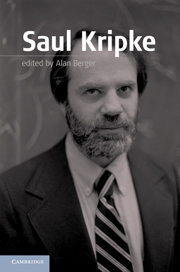Introduction to Kripke
Published online by Cambridge University Press: 05 June 2012
Summary
Kripke’s professional career began as a high school student when he published his early pioneering work in logic on the semantics and completeness proofs of the normal and non-normal modal systems. Not much later, his seminal work on “Semantical Analysis of Intuitionistic Logic” appeared. Shortly after that came his founding of transfinite recursion theory with his two classic papers, “Transfinite Recursions on Admissible Ordinals” and “Admissible Ordinals and the Analytic Hierarchy.” Had he accomplished nothing else in his intellectual life, Kripke would have already earned his claim to fame.
But his thoughts in what turned out to be his greatest area of accomplishment, philosophy, were just beginning to gel. Already as a college student he had the basic ideas of his classic seminal work, Naming and Necessity, which was to revolutionize the field of philosophy. The work revealed what has become a hallmark of Kripke: his conceptual clarity par excellence. While continuing to develop his ideas in mathematical logic, he developed many important thoughts in philosophy. His work on a new theory of truth for dealing with the Epimenides paradox (the semantical paradox of the liar), on a puzzle about belief, and on his novel interpretation of Wittgenstein on rules and private language have dominated discussion and generated an industry on these topics.
- Type
- Chapter
- Information
- Saul Kripke , pp. 1 - 14Publisher: Cambridge University PressPrint publication year: 2011



